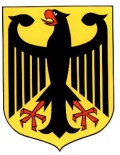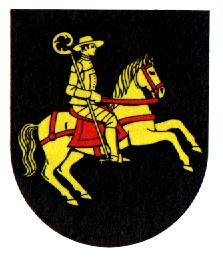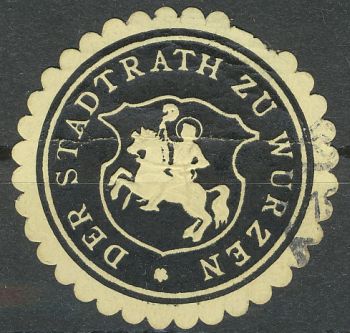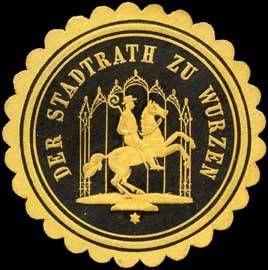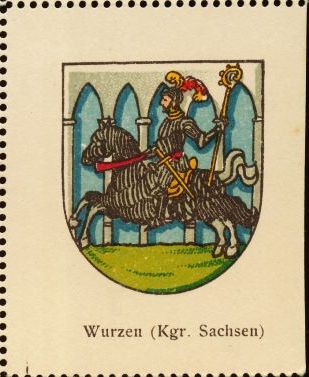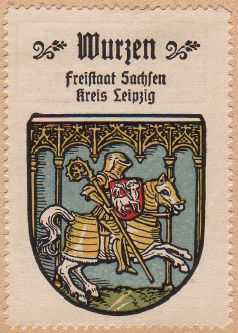Wurzen: Difference between revisions
Jump to navigation
Jump to search
Knorrepoes (talk | contribs) m (Text replacement - "|center|Wappen von {{PAGENAME}}]] " to "|center|alt=Wappen von {{PAGENAME}} / Arms of {{PAGENAME}}]] ") |
Knorrepoes (talk | contribs) m (Text replacement - " / Arms" to "/Arms") |
||
| Line 7: | Line 7: | ||
Additions : 2006 Kühren-Burkartshain (1994 Burkartshain, Kühren) | Additions : 2006 Kühren-Burkartshain (1994 Burkartshain, Kühren) | ||
[[File:wurzen.jpg|center|alt=Wappen von {{PAGENAME}} / Arms of {{PAGENAME}}]] | [[File:wurzen.jpg|center|alt=Wappen von {{PAGENAME}}/Arms of {{PAGENAME}}]] | ||
{| class="wikitable" | {| class="wikitable" | ||
Revision as of 12:48, 2 September 2022
This page is part of the German heraldry portal Deutsche Wappensammlung |
Heraldry of the World |
|
German heraldry:
|
Selected collector's items from Germany:
|
WURZEN
State : Sachsen
District (Kreis) : Leipzig (until 2008 Muldentalkreis)
Additions : 2006 Kühren-Burkartshain (1994 Burkartshain, Kühren)
| German |
Origin/meaningThe arms originally date from the middle of the 15th century. The original arms showed the local patron saint, St. Wenesclaus (Wenzel) on a horse, which is also seen on the seal from around 1900. Later the image gradually changed into a knight and finally to an undescribed mounted man holding a crosier.
Contact and SupportPartners: Your logo here ? © 1995-2025, Heraldry of the World, Ralf Hartemink Literature : Bensing et al., 1984; Kaffee Hag picture albums, 1920s |
